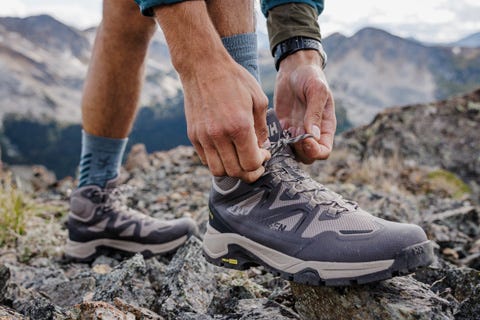
Local Storage seems to be disabled in your browser.
For the best experience on our site, be sure to turn on Local Storage in your browser.
Local Storage seems to be disabled in your browser.
For the best experience on our site, be sure to turn on Local Storage in your browser.
A JACKET THAT IS CLEAN IS A JACKET THAT PERFORMS.
November 03, 2023 6 min read
Technical ski jackets are the standard in the ski industry, but they require intentional care in order to maintain their high level of performance. If your once-waterproof ski jacket has “stopped working”, you may be asking, “Can I make my jacket waterproof again?” Yes, you can. In this guide, we provide a simple outline for cleaning and re-proofing your ski gear. I'ts as simple as doing laundry, but with a couple of small [important] tweaks...
And by the way, ski pants and bibs can be cared for in the same way as ski jackets. So don’t neglect those bottoms. Simply follow all the steps, but substitute in your pants.
A technical ski jacket refers to any performance-oriented, synthetic fabric ski jacket that is designed to repel water while still maintaining breathability. It is normally constructed using multiple layeres, including a membrane that allows vapor to escape, and blocks precipatition from getting in. At Helly Hansen, we have developed the HELLY TECH® construction – our own unique technology that you'll find across our waterproof and breathable outerwear. For help on how to choose a ski jacket, check out our guide here.
The best times to care for your ski gear are:
Once a jacket’s face fabric starts absorbing water rather than repelling it (this is called “wetting out”), the breathability of the jacket also stops functioning properly. If you lose breathability in a jacket, your body heat and sweat vapor cannot escape, creating more moisture vapor, leading to a “leaking” feeling of moisture against your skin. This is referred to as “sweating out” from the inside. In summary, if your technical ski jacket is “wetting out”, it is time to clean it.
There are a lot of myths about how you “should never wash your jacket”; these myths are simply untrue. If washed and cared for correctly, the jacket will perform at its best, for longer. Decreased water repellency can happen over time, extended periods of heavy usage, or even after the outer fabric layer (known as the “face fabric”) and Durable Water Repellent coating (DWR) have been compromised.
Did you…
Then it's definitely time to clean! Skip down to "how to wash a ski jacket" and follow those 5 steps.
Cleaning your jacket, bibs, or pants is the first step to reinvigorating the water-repelling function of the DWR. If you haven't washed your jacket in a long time (or ever), this should be enough to bring the DWR back to life.
If you have already washed your jacket properly, but it's still wetting out, then a quick reapplication of DWR may be in order. In this scenario, the order of operations is:
Most often, a single wash cycle should be enough to have cleaned your jacket or pants and revitalized the repellency. Here are the 5 steps you should follow...
Before you get washing, you'll need a technical cleaner. We recommend Grangers Performance Wash, which is specifically designed for synthetic shell jackets, synthetic ski jackets and pants.
Locate and read the manufacturer care label on your jacket(s), bibs, or pants. Today, nearly all technical ski outerwear is made of synthetic fabrics such as polyester, polyamide, nylon, etc. Be careful to follow the guidelines provided by the manufacturer, especially in regard to water temperature. For Helly Hansen ski jackets, that label is most often found on the left hip of the jacket.
The common “DO NOTs” for ski jackets and pants:
Place jacket(s) and/or pants in the washing machine.
Pro tip: All technical apparel should be washed by itself, or with same-category items. For example, multiple synthetic fabric ski jackets may be washed together, but do not mix in other types of garments (cotton, baselayers, down insulation, denim, wool, etc.). Different fabrics require different care and products.
Avoid laundry detergent. Instead, replace it with a technical cleaner. We recommend using Grangers Performance Wash, which is specifically designed for use with synthetic shells and synthetic-insulated ski jackets and pants.
If you are using a top-loading machine:
- add 3 full caps (150ml) for 1–3 garments or;
- add 5 full caps (250ml) for 4–5 garments.
If you live in an aread with hard water, toss an extra capful of Grangers Performance Wash.
If you have a High Efficiency (HE) machine, use about half the recommended amount.
If you are using a front-loading machine...
- add 2 full caps (100ml) and no more than 2 garments.
If you live in an aread with hard water, toss an extra capful of Grangers Performance Wash.
If you have a High Efficiency (HE) machine, use about half the recommended amount.
Most often, use medium temperature water, and a medium-strength cycle. Consult care label to be sure.
Most importantly, follow the care label for specific drying instructions.
Pro tip: Be careful not to overdry or overheat synthetic ski outerwear. Extremely high heat can damage the seam-taping of some synthetic gear. Opt for medium heat temperatures, instead.
If instructions are not clear, a common method is to tumble dry the jacket(s) on medium heat. Otherwise air-drying can be an alternative.
If your ski jacket/pants are still not clean or water-repellent, it’s time for another round of care. Read on to discover how...
DWR is a hyper-thin coating that helps water droplets to bead up and roll off the outer face fabric of ski jackets and pants. When your ski apparel “stops working” it's most likely because its DWR layer has faded away, flaked off, or been soiled by dirt, grime, or other agents.
Always wash your ski outerwear first, before applying any waterproofing to it. Assuming you have already followed the steps on "how to wash a ski jacket", do not dry the garment(s) in between these back-to-back cycles.
Refer to the entire section above about "how to wash a ski jacket", but skip the final “drying” step.
“Wash” the jacket or pants again a second time, but this time, use a liquid DWR product like Grangers Clothing Repel, instead of the performance wash you used with the first wash. Do not dry the garment(s) in between these back-to-back cycles.
Pro tip: Many DWR aftercare treatments are “wash-in”, which means they use the process of a washing machine to reapply DWR functionality to a jacket. Some DWR aftercare treatments are “spray-on”, meaning that they are applied with a spray bottle while laying the jacket flat horizontally on a protected flat surface.
For a top-loading machine:
For a front-loading machine:
Most importantly, follow the care label for specific drying instructions.
Pro tip: Be careful not to overdry or overheat synthetic ski outerwear. Extremely high heat can damage the seam-taping of some synthetic gear. Opt for medium heat temperatures, instead.
If instructions are not clear, a common method is to tumble dry the jacket(s) on medium heat. Otherwise air-drying can be an alternative. Grangers Clothing Repel does not require heat activation to work properly.


May 15, 2024 3 min read
The best hiking shoes or boots should be comfortable to wear. Follow our expert tips to learn how to choose the right hiking footwear for you.

April 30, 2024 3 min read
To dress for coastal sailing, you want to be protected against the wind and spray from the waves, and also the sun. In this guide, we share some top tips for layering from professional sailors, Kayleen VanderRee and Pip Hare.